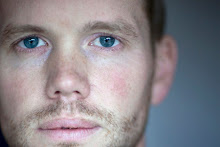Last week I had the opportunity to watch a run-through of Miek Uitenhout's performance Lollipop, which will be part of Festival a/d Werf 2010. In the performance, a woman is trapped inside of a bell jar, who the audiences watches blatantly as she engages in an inner battle. When talking about her work, Miek tells me that it all started with a fascination she had for Marie Antoinette. She was captivated by the contrast between the glamour of her life and the way in which she actually lived and eventually died. She then realized there were some points of comparison between her and Britney Spears. Even though the second one was born several hundred years later and is still alive, they remain, in Miek's mind, similar kinds of women. Both share a preoccupation for a public eye eager to follow their every move. Furthermore, both of them are tumultuous women in contact with extreme feelings. This is how she came up with the idea of the bell jar: “I think that when you are in contact with that extreme feeling, then you might be a bit closed towards the outside world, and that is the feeling that you are living in a bubble or in a bell jar”. What makes this image even more effective is the fact that it symbolizes concealment as much as exposure. The woman inside the jar is locked up inside her own world, but she is also on display, showcased in a transparent structure that doesn't allow her to hide anything from an audience that surrounds her. The glass is a perfect metaphor because it both distances and reveals the woman: it is a space of loneliness and entrapment in the midst of the public eye. Miek says, however, that this play is not only about Marie Antoinette or Britney Spears, but it is about every woman, and even about every person. When I ask her how she would like the audience to react to her work, she says she would like them to actually feel that they are not so different from these women, the extreme feeling that they experience(d) is actually “a bit closer to us than we think. You just need an open mind to the feeling. It is actually very close.”
Miek originally studied Graphic Design and Theatre Design. This visual background clearly shines through in her way of working and her conception of theatre. For this piece she first developed a sort of magazine, a personal, visual map of the issues she wanted to tackle in the piece: a collection of intimate thoughts expressed in the forms of images. Very early on she had the image of the bell-jar in her mind. As she pursued her research, she was also drawn toward the life and work of Sylvia Plath. To her surprise, she found the last work of Plath is a semi-autobiographical novel called The Bell Jar, which describes a woman who feels like she is living inside of such an object. For Miek this is not a coincidence, but rather a confirmation of the power and universality of the image that she is working with. Once she had an initial set of images from where to move forward, the next step was finding an actress who could impersonate Lollipop, the woman who would be trapped/exposed inside of the bell jar. “I had to find a strong but also beautiful actress, and also one that could be the 'ideal woman', or at least the ideal woman that we sketch in the fashion world”. For this, she found Lotte Verbeek: “I saw her in Nothing Personal, where she was a strong woman that wore no make up and was dressed in boots. And then I saw an interview with her where she was wearing make up and had a little dress on. And I thought that she had that contrast already in her. That is what I am looking for. The ideal image but also something behind the beautiful face.” Miek developed the initial set of ideas through improvisations with Lotte. The beginning and the end have remained almost unchanged but everything else was developed in communication with Lotte: “there is a lot of her in the piece”. During the first part of the working process, they developed a lot of material, and then Miek started to discard most of these excessive amount of material, letting go of most parts and keeping just the essential ones: “I wanted to have too much, I wanted to kill a lot of darlings”. She didn't want to articulate her material into a story or a conventional piece, but rather offer something that she describes “like a sort of roller-coaster: you are looking at it and you get captured”.
The fact that Lotte is a public figure, a well-known film actress, also helps bring about the theme of this play. It deals with women who are both fake and authentic in the public eye, being true to themselves but also doing this in front of an audience. However, as Miek pointed out repeatedly as she talked to me, this is not as far removed as we might think. Extreme feelings, an awareness of being enclosed and exposed, a longing for wanting to be true to yourself while at the same time being watched by others... those are all things that everyone -Miek says- can relate to.
Wednesday, May 19, 2010
Subscribe to:
Post Comments (Atom)



No comments:
Post a Comment